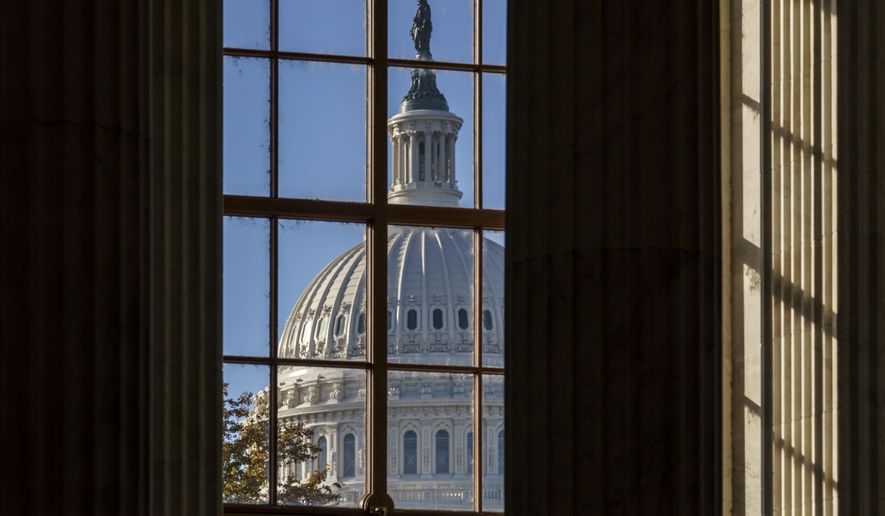OPINION:
Editor’s note: This is one in a series examining the Constitution and Federalist Papers in today’s America.
As we head toward the 2022 elections, it is a safe bet that few Americans can identify the 17th Amendment to the Constitution, even though it’s one of the most significant amendments. Ratified on April 8, 1913, it completely changed the balance of power in our federal system.
The amendment provided for the direct popular election of U.S. senators. That sounds non-controversial now, but it meant taking the power away from state legislatures that were originally given the authority to choose the senators representing their state in Section 3 of Article I of the Constitution.
If you took civics in high school or you look up the definition of “checks and balances,” it is always referred to as the system that provides our three branches of the federal government — the legislative, judicial and executive — with separate powers that can be used to “check” the power of the other branches, ensuring that no one branch becomes too powerful. This is a horizontal balance of power that applies within the federal government.
But what civics teachers and others seem to have forgotten in the more than 100 years that the 17th Amendment has been in place is that the original design of the Constitution in Article I gave state governments an essential, second vertical check on the power of the federal government — the authority of state legislatures to pick the senators representing their states.
As the Heritage Guide to the Constitution explains, the “Framers intended to protect the interests of states as states” and the “mode of election impelled senators to preserve the original federal design and to protect the interests not only of their own states, but, concomitantly, of the states as political and legal entities within the federal system.”
Alexander Hamilton emphasized this at the New York ratifying convention in 1788 when he said that senators “will constantly look up to the state governments with an eye of dependance” and, if they wanted to be reelected by state legislators, they, “would have a uniform attachment to the interests of their several states.” In other words, they would be wary of imposing unfunded mandates on state governments or taking other actions that extended the power of the federal government into areas traditionally within the authority of the states.
As Mark Levin succinctly explained in “The Liberty Amendments,” the original method of electing U.S. senators that provided “state governments with direct input in the national government was not only an essential check on the new federal government’s power, but also a means by which the states could influence congressional lawmaking.”
Despite all of this, the amendment was ratified in fewer than 11 months and in overwhelming numbers — in the 36 states that ratified it, only 191 opposing votes were cast.
The 17th Amendment was the result of the rise of “Progressivism,” pushed by intellectuals and social reformers who believed that our constitutional system of government was outdated and needed to be reformed. It was designed to enhance the authority of the central government and expand the size and power of a federal bureaucracy that could orchestrate the changes they believed would lead to a new utopia, while diminishing the power of state governments to contest those changes.
When the 17th Amendment was combined with the 16th Amendment, which gave Congress the power to “lay and collect taxes on incomes,” and which was ratified earlier that same year, the federal government had the ability to drastically increase its spending and power without considering the interests of the states or the effects on the sovereign authority of the states.
The 17th Amendment critically altered the balance of power between state governments and the federal government, to the detriment of the states. States no longer “had a legislative venue, or any venue, to influence directly the course of the federal government,” Mr. Levin says.
It is impossible to conceive that the Constitution would have been ratified without this essential feature preserving the balance of power between the states and the federal government. With direct elections, senators have no incentive to protect state governments and state budgets at the expense of the enormous, bloated volume of federal programs and spending that is leading us down the road to financial insolvency.
Could this be changed? Should it be changed back? These are questions that prompt vigorous debate. But the likelihood that American voters would support going back to the original system and losing their ability to directly elect U.S. senators seems very slim. So, while we can recognize the structural damage this amendment has caused, what happened more than a century ago will probably remain unaltered.
• Hans A. von Spakovsky is a senior legal fellow and manager of the Election Law Reform Initiative at The Heritage Foundation and a former Justice Department lawyer and Federal Election Commission commissioner. He is the co-author of “Our Broken Election: How the Left Changed the Way You Vote.”





Please read our comment policy before commenting.